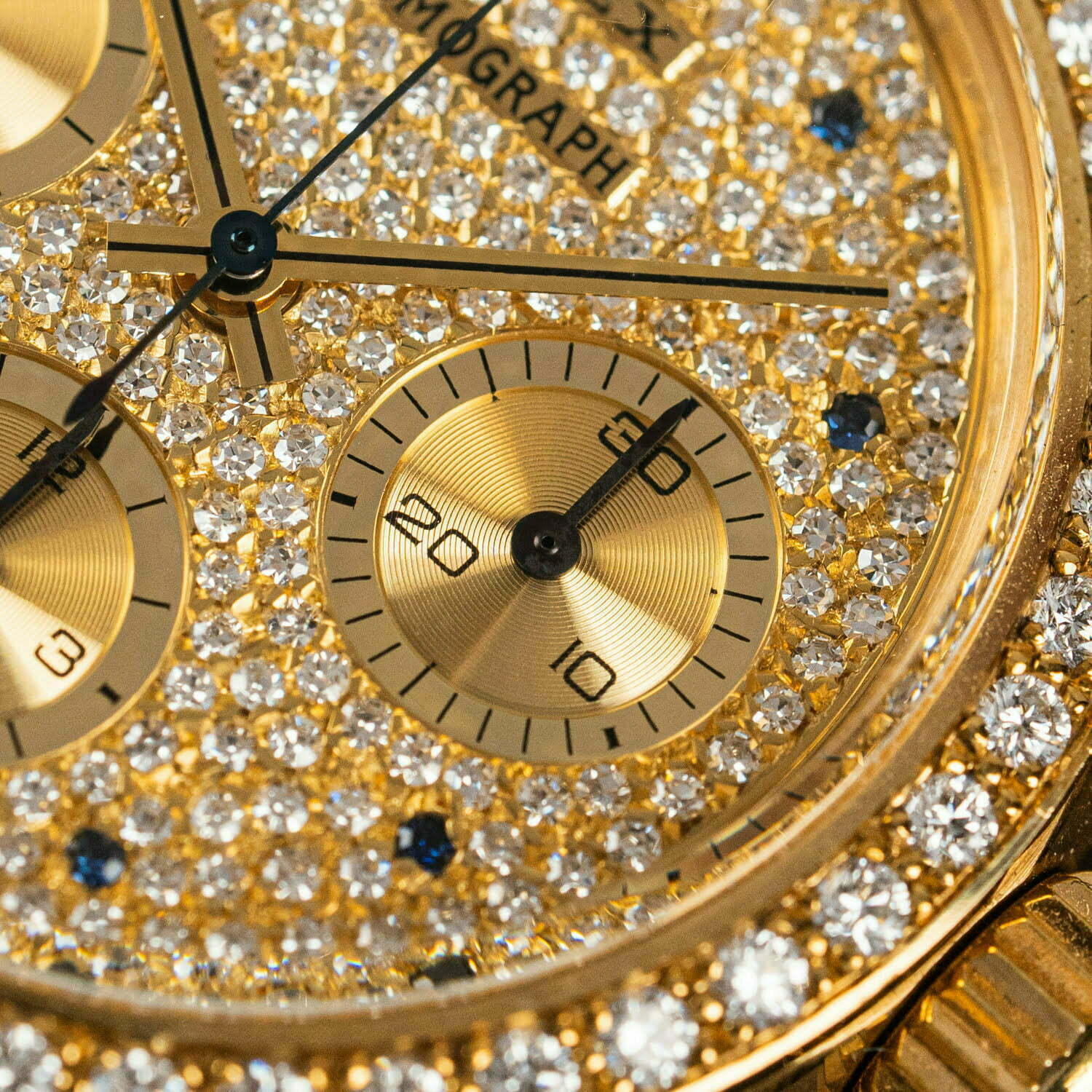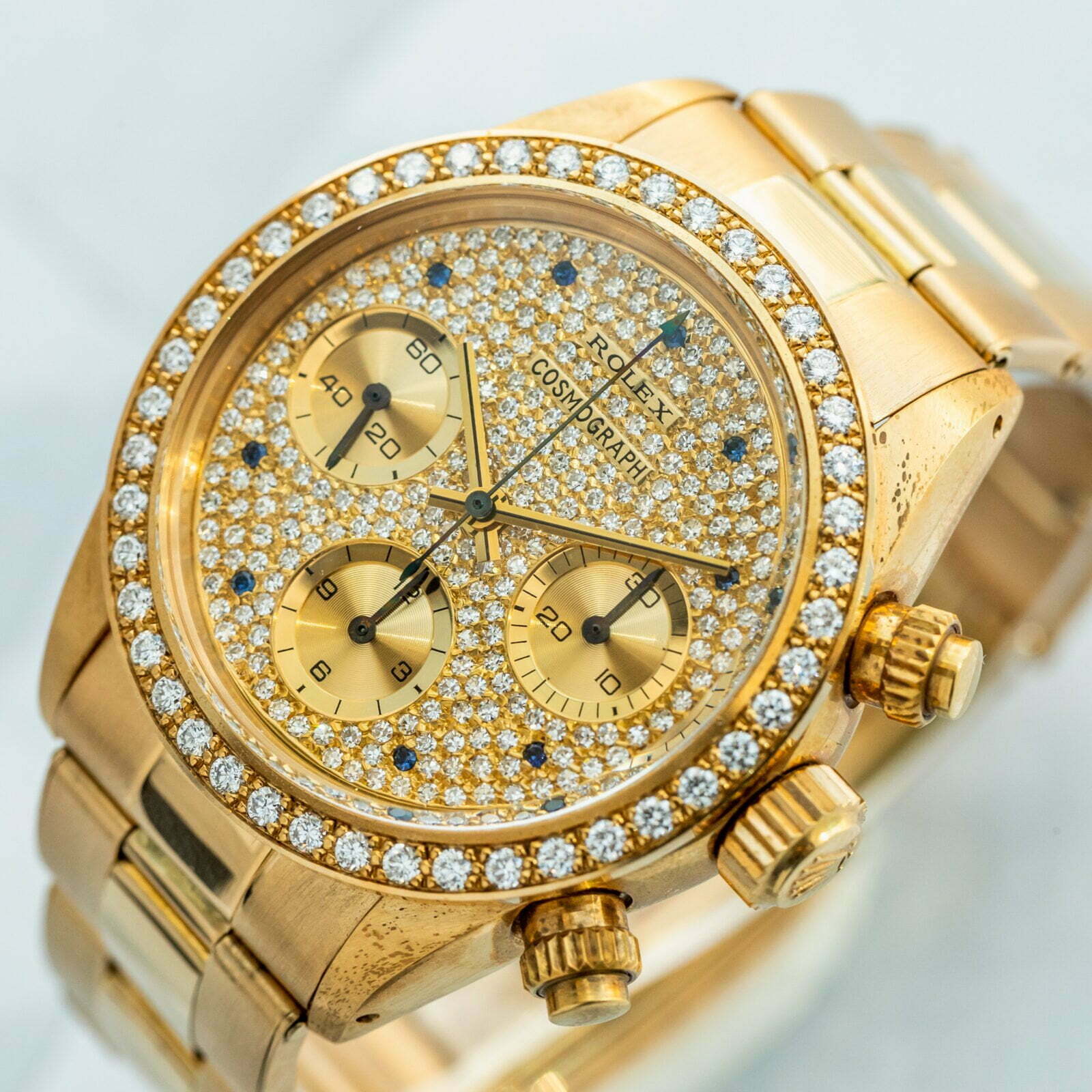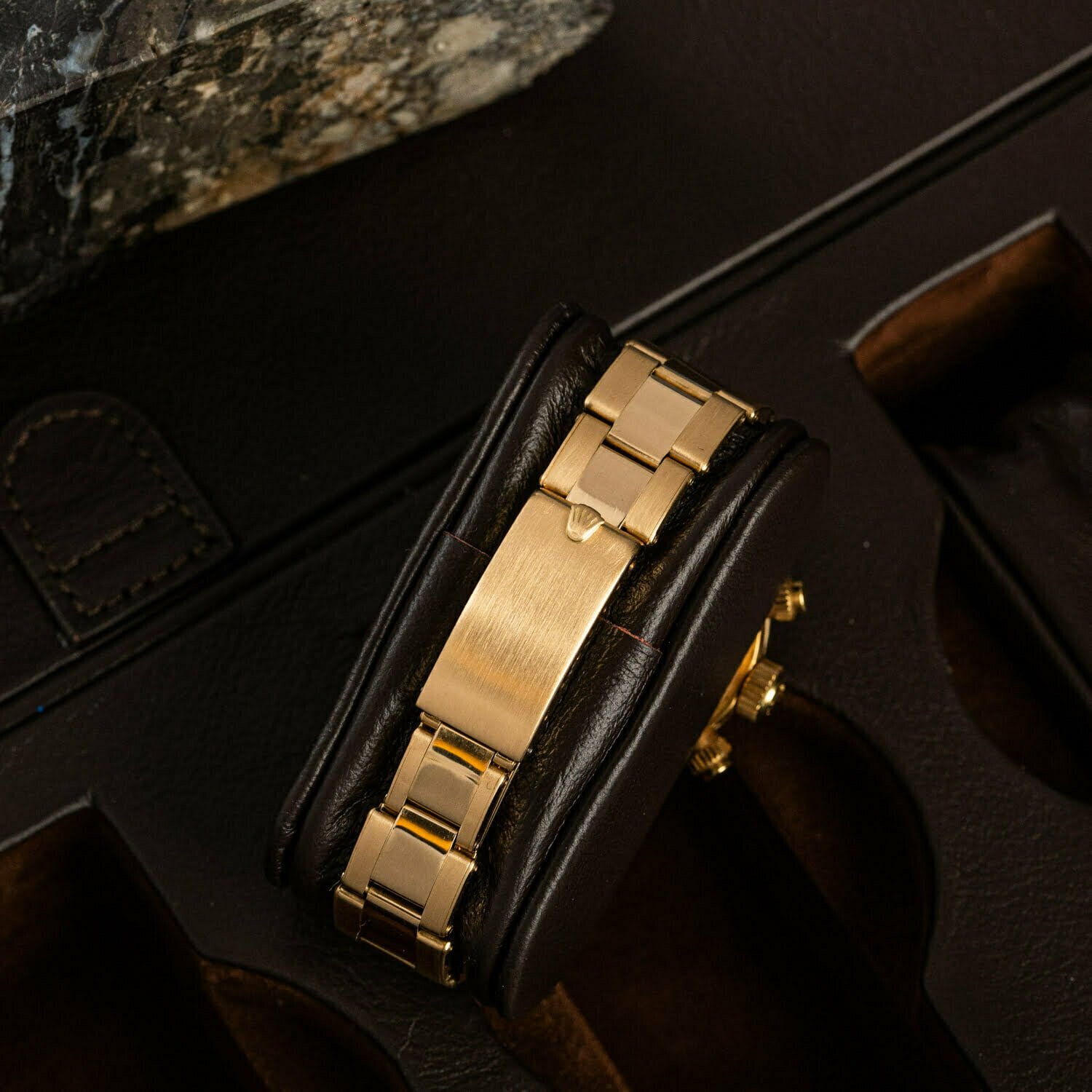

18k yellow-gold bezel with factory-set diamonds, original Rolex
6269
This is the most exclusive Daytona duo in history.
Only a few people – among whom John Mayer – have ever held these lavish executions side by side. So, you can probably imagine how happy and proud we are that we have succeeded to source this exceedingly rare pair for a dear client and friend of us.
Rolex marketed the Daytona as a sporty chronograph and, just like most of their tool watches, it was debuted in steel. In the 80s, after more than two decades of production, the Daytona still received little love and most of them languished in dealer displays for years. Hence, it was quite an unexpected move from Rolex to launch two new Daytona references that each demanded a retail price many times the price of a regular Daytona – in the case of 6270 even twenty times greater than a normal gold Daytona.
However, these were not ordinary gold Daytona’s of course. The 6269 and 6270 were the first and only bejeweled Valjoux Daytona’s that saw the light of day. The 6269 has an 18k gold bezel adorned with a whopping 44 brilliant-cut diamonds.
Contrary to popular believe, the gem-set dial isn’t inherent to either the 6269 or the 6270. Scarcely a regular champagne or black dial was mounted. Yet, the pave dial with its nearly 240 diamonds (!) still looks the best. A cool detail: as they are set by hand there are small inconsistencies and they’re often not 100% identical. The hour markers are brilliant cut sapphires. The brand and model-name are applied on cartouches with black paint. These dials are one of the few during Rolex’ entire production run where it lacks a coronet at the 12 and a Swiss signing at 6. The totalizers are champagne colored with black text. The hands are monochrome and closed (without luminous material like the dial) with a black lacquered stripe in the center.
More often than once, the Daytona is associated with the Oyster bracelet, yet there are plenty of examples where the customers’ preference of a different configuration was granted. A Jubilee was the best contender for an alternative look on your gold Daytona as a President bracelet doesn’t fit between the 19mm lug-width. However, neither the 6269 nor the 6270 were in the catalogue and no official ads have surfaced, so it is impossible to tell what bracelet Rolex had in mind. It is safe to assume that if you we’re to spend such an exorbitant amount, the choice would be yours.
Inside the 37.5 mm measuring Oyster case we find a chronometer certified caliber 727. Although it was the best version of the caliber 72 that was used for the Rolex Cosmograph, it still was a manual winding caliber. Often this is mentioned as one of the reasons they weren’t selling that well as most people associated and enjoyed Rolex with automatic winding mechanism instead.
We can only guess about the production numbers of the 6269, but certainly more than twenty, which probably is the amount of 6270’s that were produced. However, almost nothing about these references is common knowledge and the scarce information that has been recovered is usually only shared between the high-ranking connoisseurs, which also adds to the charm of these elusive models.
Back in the day, you could have bought a proper house of the historic retail price. The current market value of this duo will get you quite a bit more. When Christies hammered close to a million for a 6270 in 2014, people were mocking the buyer, but in the past 7 years a lot has changed as quite some attention shifted towards gem set tool watches. This translated in many current releases by Rolex like the ‘Rainbow Daytona’ and ‘Eye of the Tiger’ for example. Not only is such a blingy sports model finally accepted, but it has also become the target for many collectors. The absolute grail for them being the 6269 and the 6270.
The 6269 we have on hand here is a remarkably well-preserved example from the mid 80's. Furthermore it is the only 6269 we have come across with the caseback sticker still present. The hallmarks on the lugs are clearly visible and so is the serial and reference number. The bracelet shows signs of wear.












